Beschreibung
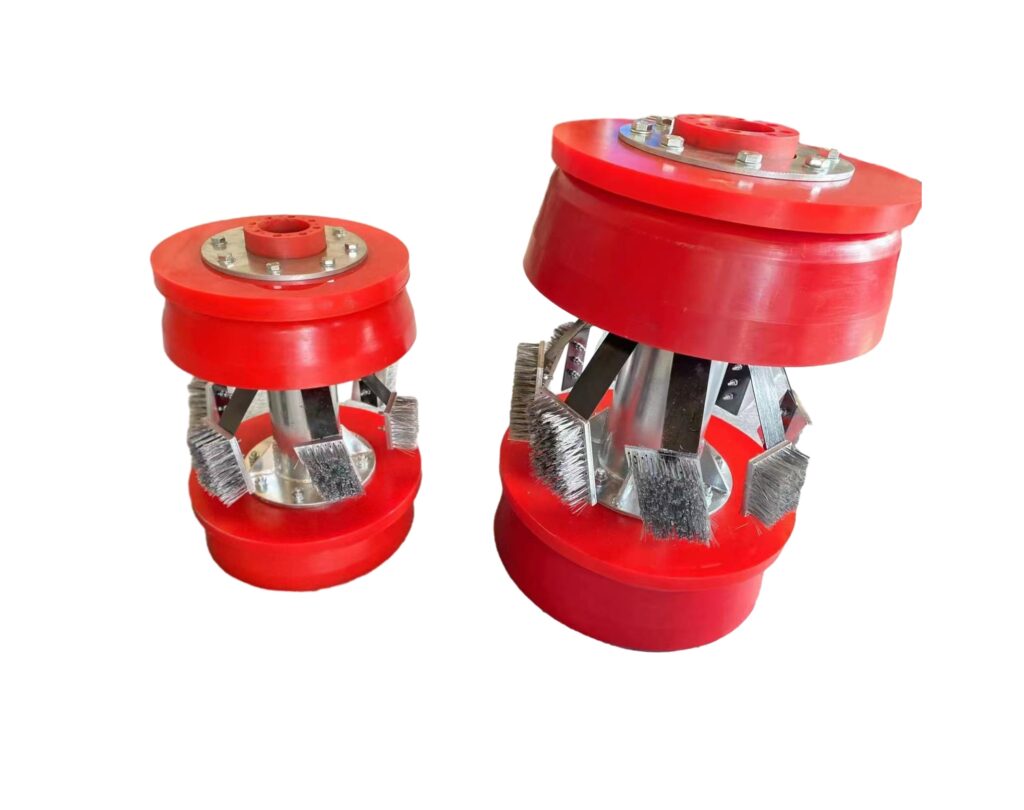 Pipeline-Molchschweine verstehen
Pipeline-Molchschweine verstehen
Ein Pipeline Pigging Pig, was für „Pipeline Intervention Gadget“ steht, ist ein Werkzeug, das zum Reinigen oder Überprüfen von Rohren in allen Phasen des Öl- und Gastransportprozesses verwendet wird. Es wird angenommen, dass der Spitzname „Schwein“ auf das „kreischende“ Geräusch zurückzuführen ist, das die frühen Schweinemodelle (aus Stroh, Draht oder Leder) beim Transport durch Pipelines machten.
Molcharbeiten in Öl- und Gaspipelines
Die Praxis des Molchens in der Öl- und Gasindustrie ist ein wichtiger Aspekt der Durchflusssicherung. Pipeline-Molche werden eingesetzt, um Pipelines zu spülen, zu reinigen und zu inspizieren und so deren reibungslosen Betrieb sicherzustellen. Aufgrund der potenziellen Risiken sollten Molcharbeiten nur von erfahrenen Fachleuten durchgeführt werden.
Einführung von Pipeline Pigging Pig
EMT ist ein führender Entwickler und Hersteller einer breiten Palette von Molchmolchen, die jeweils speziell für bestimmte Anwendungen entwickelt wurden. Ihr Produktkatalog ist umfangreich und umfasst Molche für verschiedene Zwecke wie Flüssigkeitsverdrängung, Reinigung, Dosierung, Messung und sogar Spezialmolche für einzigartige, anspruchsvolle Aufgaben.
Die Auswahl der von EMT angebotenen Rohrmolche ist nicht nur vielfältig in der Anwendung, sondern auch in der Bauweise. Sie sind in Durchmessern bis zu 60 Zoll erhältlich und eignen sich für ein breites Spektrum an Rohrleitungsgrößen. Darüber hinaus kann die Aggressivität der Molche je nach Aufgabenstellung gewählt werden und reicht von festen Urethanmolchen bis hin zu solchen mit Stahldrahtbürsten für die Hochleistungsreinigung.
Eine der Kernstärken von EMT sind die angebotenen Anpassungs- und Konfigurationsmöglichkeiten. Sie verstehen, dass jede Pipeline einzigartig ist und daher eine maßgeschneiderte Lösung erfordert. EMT berücksichtigt Faktoren wie den Durchmesser der Pipeline, die Art des transportierten Stoffes, die inneren Bedingungen der Pipeline und spezifische Kundenanforderungen. Dadurch stellen sie sicher, dass jedes von ihnen hergestellte Schwein genau für die Aufgabe geeignet ist, für die es bestimmt ist.
Dieses Engagement für eine individuelle Anpassung erstreckt sich nicht nur auf die physischen Eigenschaften der Schweine, sondern auch auf ihre Funktionalität. Ganz gleich, ob es sich um einen Molch für die Grundreinigung, eine erweiterte Inspektion oder komplexe Multifunktionsaufgaben handelt – EMT ist in der Lage, einen Molch zu entwickeln und herzustellen, der genau Ihren Anforderungen entspricht. Ihre Flexibilität und Anpassungsfähigkeit stellen sicher, dass selbst die komplexesten Pipelinebedingungen effektiv verwaltet werden können.
Molchmethoden und Auswahl der Molchmethoden
(1) Wachsentfernung in Rohölpipelines mittels Pipeline-Molchen
Bei Rohölpipelines, die wachshaltiges Öl transportieren, kommt es häufig zu Wachsablagerungen entlang der Pipelinewände. Wenn die Wachsschicht eine beträchtliche Dicke erreicht, muss ein Molchprozess eingeleitet werden, um die Rohrleitung zu reinigen. Diese Vorgehensweise senkt nicht nur die Betriebskosten, sondern steigert auch die Kapazität der Pipeline. Um diesen Vorgang durchzuführen, ist es wichtig, geeignete Weichmolche und mechanische Molche auszuwählen, die mit Molchverfolgungsgeräten ausgestattet sind.
Der Pipeline-Molchprozess beginnt mit dem Starten eines Weichmolchs, um den internen Zustand der Pipeline zu bewerten. Sobald die Integrität der Pipeline überprüft ist, werden für den Reinigungsvorgang mechanische Molche, eine Art Pipeline-Molch, eingesetzt. Diese mechanischen Molche beseitigen effizient Verunreinigungen und Ablagerungen in der Rohrleitung und entfernen mithilfe ihrer Stahlbürsten Wachsablagerungen und Korrosion von den Rohrleitungswänden.
(2) Molchmethoden für Erdgaspipelines unter Verwendung herkömmlicher Molche
Erdgaspipelines transportieren häufig Gase wie Kohlendioxid und Schwefelwasserstoff. Diese Gase können in Gegenwart von Wasser Hydrate bilden, was zu Verstopfungen von Rohrleitungen und Geräten sowie zu Sicherheitsrisiken führen kann. Deshalb müssen diese Pipelines vor der Inbetriebnahme mit traditionellen Molchen, wie z. B. Ledermolchen, gemolcht werden. Besonders effektiv sind diese Molche für Rohrleitungen, die feuchte Gase transportieren, da ihre Hauptaufgabe darin besteht, Wasser aus der Rohrleitung zu entfernen. Für diese Aufgabe wird häufig ein Molch mit gerader Platte gewählt, der für seine hervorragende Dichtungsleistung bekannt ist. Wenn die Pipeline aus einem Keller oder Gasfeld stammt, das leichte Kohlenwasserstoffkondensate enthält, können Molche mit geraden Platten direkt zur Entfernung verwendet werden.
(3) Molchung von Erdgaspipelines, die gemischtes Öl und Wasser transportieren, mithilfe spezieller Pipeline-Molche
Bei Erdgasleitungen, die schon lange in Betrieb sind und Zweiphasenströmungen transportieren, können Probleme wie Flüssigkeitsansammlungen und Innenwandkorrosion auftreten. Diese Flüssigkeiten sammeln sich normalerweise an den tiefsten Punkten der Rohrleitung an, was zu einem erhöhten Druckabfall und einer verringerten Durchflussfläche führt.
Mehrere Faktoren können die Wirksamkeit des Molchprozesses einer Zweiphasenströmungspipeline beeinflussen: die zulässige Durchflussrate und der zulässige Druckabfall des Gas-Flüssigkeits-Gemisches, das Gas-Flüssigkeits-Verhältnis, die Form des Längsschnitts der Pipeline, die Menge der angesammelten Flüssigkeit usw Größe des Dübelfanggeräts. In Offshore-Pipelinesystemen spielen auch der Boden des Steigrohrs und die Höhe des Flüssigkeitspfropfen-Auffanggeräts eine Rolle. Für diese Rohrleitungen werden in der Regel Molchbälle und Molche für allgemeine Zwecke verwendet. Für den Molchprozess können jedoch auch Rohrmolche mit Bypass eingesetzt werden.
Best Practices für sicheres und effizientes Molchen von Erdgasfernleitungen
(1) Richtige Planung des Molchbetriebs: Gewährleistung der Sicherheit beim Molchen von Erdgaspipelines über große Entfernungen
Das Molchen von Erdgas-Fernleitungen birgt Risiken. Eine unsachgemäße Handhabung kann dazu führen, dass ein Rohrmolch stecken bleibt, was einen Rohrdurchschnitt zur Bergung des Rohrmolchs erforderlich macht und möglicherweise zu Gaslecks führt. Daher legen die Lehren aus früheren Molchbetrieben Wert auf eine sorgfältige Planung. Der erste Schritt im Molchprozess sollte darin bestehen, einen Molch mit gerader Platte zur Erkundung und Erkennung zu starten, um den internen Zustand der Pipeline zu beurteilen. Nachfolgende Molchvorgänge sollten methodisch durchgeführt, an die spezifischen Umstände angepasst und vor der Geschwindigkeit priorisiert werden.
(2) Detaillierte Molchnormen: Der Schlüssel zum sicheren und effizienten Molchen von Pipelines
Die Komplexität und die potenziellen Risiken beim Molchen von Erdgasfernleitungen erfordern eine sorgfältige Planung und präzise Molchstandards. Die Arbeiter sollten zunächst alle relevanten Pipeline-Zeichnungen und -Daten zusammenstellen, um die spezifischen Parameter der Pipeline und die realen Bedingungen zu verstehen. Auf dieser Grundlage sollte ein umfassender und logischer Molchplan erstellt werden, der die Betriebsabläufe Schritt für Schritt detailliert beschreibt.
Mit Schaummolchen können Erstinspektionen der Gasleitungen durchgeführt werden. Befindet sich die Rohrleitung in einem guten Zustand und weist nur minimale Schäden auf, kann zur weiteren Behandlung ein schmetterlingsförmiger Ledermolch eingesetzt werden. Wenn der Schmutz an der Rohrwand beispielsweise weniger als 20 kg wiegt, kann eine Aluminiumplatte mit geeignetem Durchmesser verwendet werden. Wenn die Rohrleitung keine größeren Schäden oder starke Krümmungen aufweist, können gerade Plattenmolche für die bidirektionale Übertragung verwendet werden. Es ist wichtig, sich während des Pipeline-Molchprozesses an die etablierten Standardverfahren zu halten und eine überstürzte Aufgabe zu vermeiden.
(3) Effizientes Molchen von Erdgasfernleitungen: Rolle der Vorbereitung und des Managements
Für eine wirksame Überwachung und Verwaltung müssen Molchbetreiber vor Beginn des Molchvorgangs angemessen vorbereitet werden. Vor dem Molchen sollten alle Komponenten, wie z. B. die Einlass- und Auslassventile, sorgfältig gewartet und überprüft werden. Darüber hinaus sollten Molchtechnik-Bohrmaschinen verstärkt sein, um eine Funkenbildung durch Kollisionen oder Reibung während des Einsatzes zu verhindern.
Bestimmte Schritte erfordern besondere Aufmerksamkeit. Wenn der Molchball beispielsweise im Zylinder gesammelt wird, sollte er durch Stickstoff ersetzt werden, um seinen Druckunterschied zu verringern. Am Reduziergelenk des Kugelzylinders sollte ein Ausgleichsventil installiert werden. Während eines langsamen Boosts sollten die Einlass- und Auslassventile des Kugelzylinders nacheinander geöffnet und anschließend das Ausgleichsventil geschlossen werden. Dadurch wird sichergestellt, dass der Servicevorgang sicher und effektiv durchgeführt wird.
Schlussfolgerung
Pipeline-Molche, die von Unternehmen wie EMT entwickelt und hergestellt werden, sind unverzichtbare Werkzeuge für die Reinigung, Inspektion und Wartung von Pipelines in der Öl- und Gasindustrie. Diese Molche sind in verschiedenen Größen und Aggressivitätsgraden erhältlich und können an spezifische Rohrleitungsbedingungen und Kundenanforderungen angepasst werden. Sie werden für verschiedene Zwecke verwendet, darunter Flüssigkeitsverdrängung, Reinigung, Dosierung, Messung und mehr. Der verwendete Molchtyp hängt von der Art des transportierten Stoffes und den inneren Bedingungen der Pipeline ab. Weichmolche und mechanische Molche werden beispielsweise häufig zur Wachsentfernung in Rohölpipelines eingesetzt, traditionelle Molche für Erdgaspipelines und Allzweckmolche oder Molche mit Bypass für Pipelines, die eine Zweiphasenströmung transportieren. Die Verwendung des geeigneten Molchmolchs und die Einhaltung detaillierter Molchstandards und -verfahren gewährleistet die Sicherheit, Effizienz und Effektivität des Pipelinebetriebs.

 English
English العربية
العربية Deutsch
Deutsch Bahasa Indonesia
Bahasa Indonesia Português
Português Русский
Русский Español
Español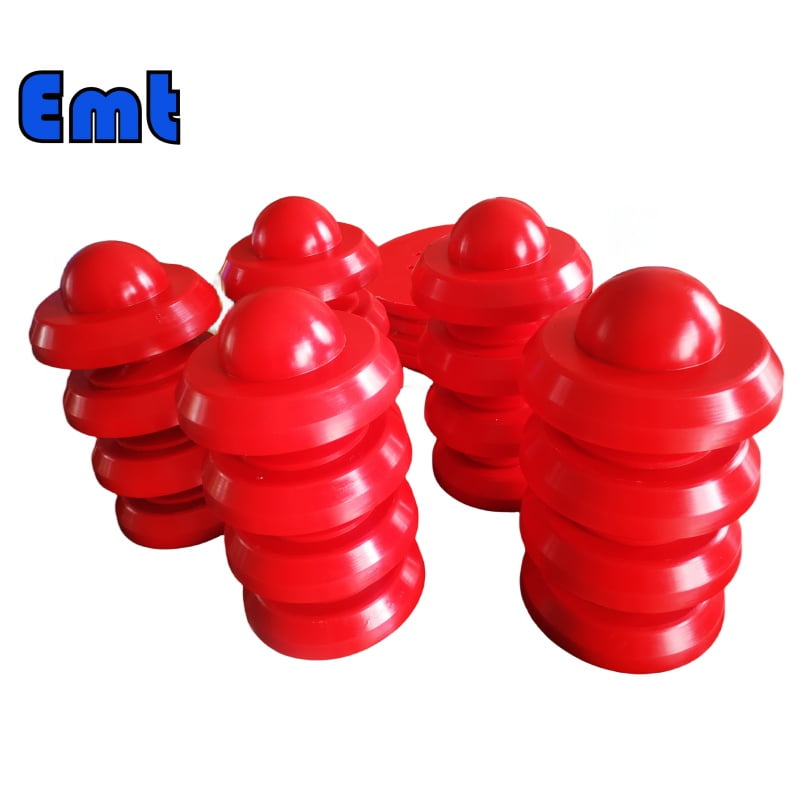

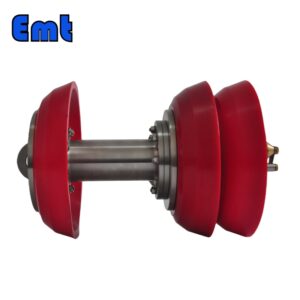
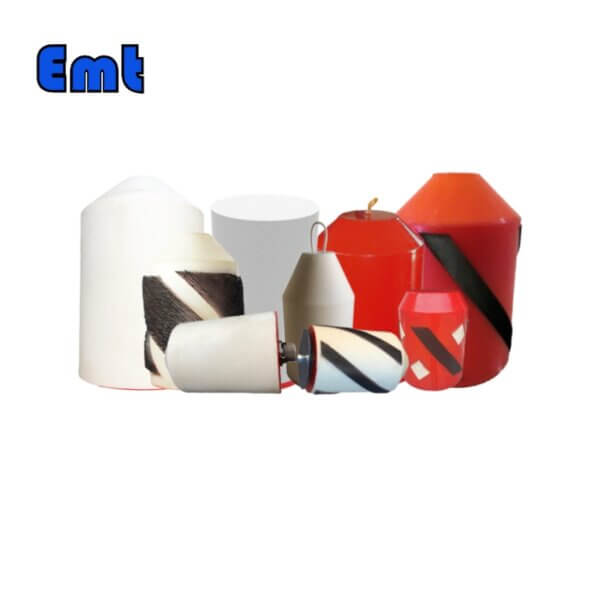

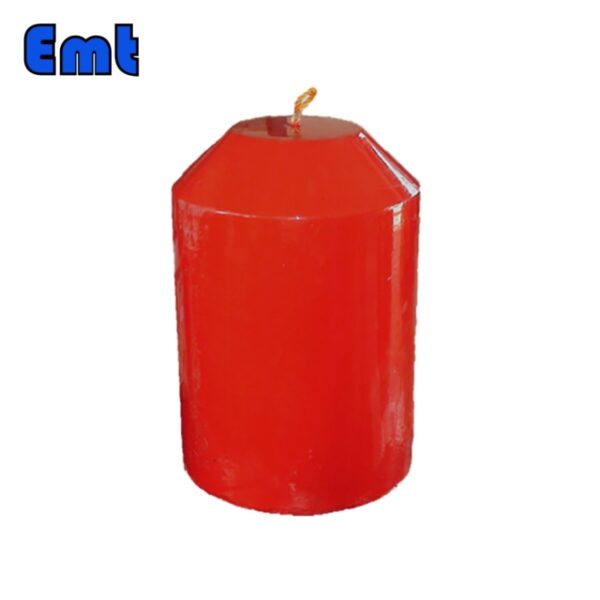
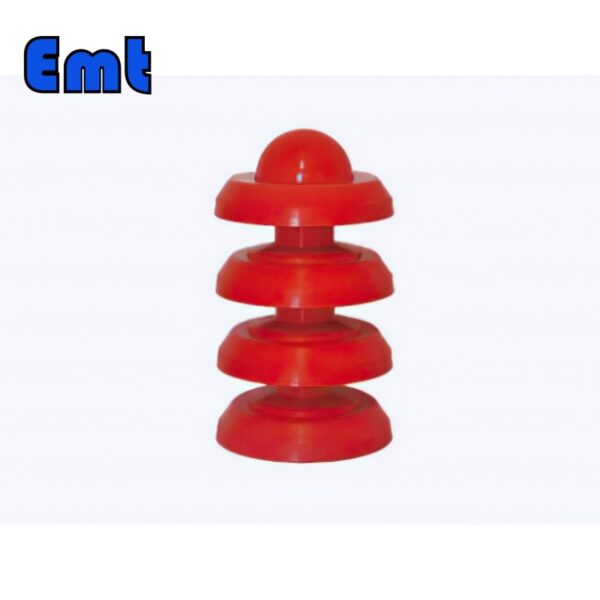
Rezensionen
Es gibt noch keine Bewertungen.